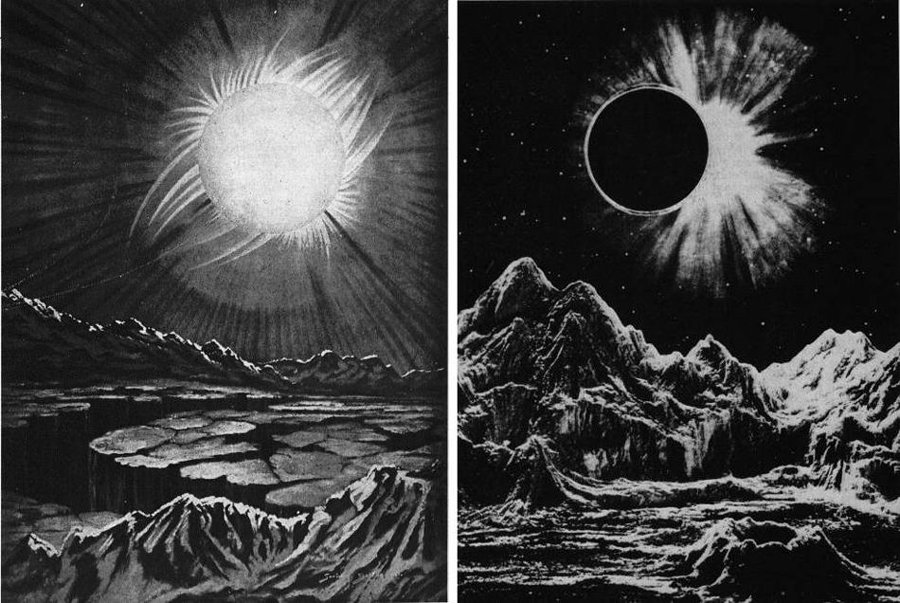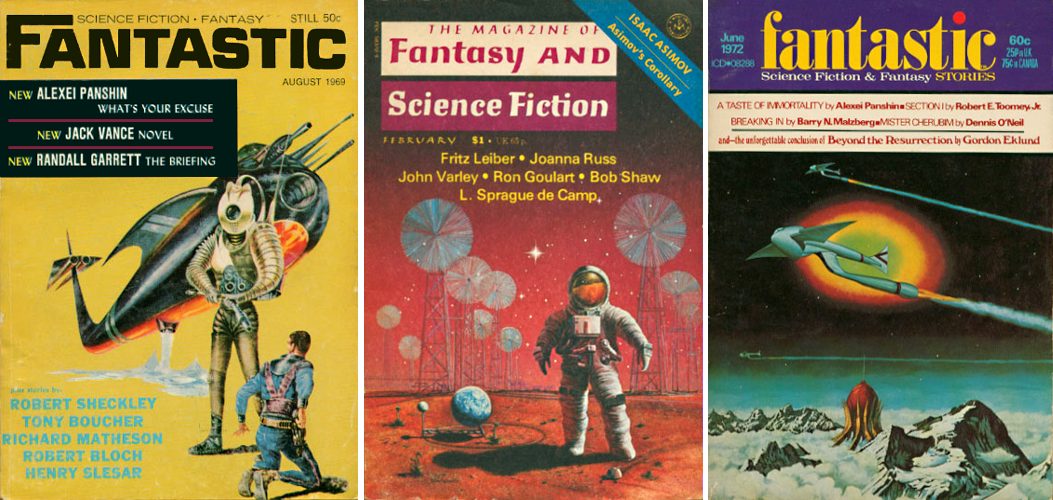3.03.2012
asako narahashi
"I am not a very good swimmer. And I am rather uncomfortable in the water. I cannot escape a sense of fear. Even if I decide that I want to take a photograph from there (=within the water_, there are times when I just can’t do it. And I cannot freely create any distance. I want to be open to all sorts of things and I decided to remain uncomfortable." - a.n.
10.21.2011
10.20.2011
tenhi - viimeiseen
Through Bloom-blades
In a grave grove
Lay on the bones
Feel deep with the leaves
Linger in meadows and spring-plains
Through bloom-blades the dead utter
Hear the bones collide
Feel when night runs through into deeper shadows
Only flowers this july
Wait here in summer's breath
10.19.2011
melancology
Black metal irrupts from a place already divested of nature, a site of extinction, ‘a place empty of life / Only dead trees …’ (Mayhem, ‘Funeral Fog’, 1992); ‘Our skies are forever black / Here is no signs of life at all’ (Deathspell Omega, ‘From Unknown Lands of Desolation’, 2005). As such black metal could be described as a negative form of environmental writing; the least Apollonian of genres, it is terrestrial – indeed subterranean and infernal – inhabiting a dead forest that is at once both mythic and real unfolding along an atheological horizon that marks the limit of absolute evil where there are no goods or resources to distribute and therefore no means of power and domination, a mastery of nothing.
A new word is required that conjoins ‘black’ and ‘ecology’: melancology, a word in which can be heard the melancholy affect appropriate to the conjunction. A new word implies a new concept and we know from Deleuze and Guattari that concepts have to fulfil three criteria. Accordingly, the plane of immanence of melancology is extinction and non-being. All things are destined for extinction; immanent to all being is the irreducible fact of its total negation without reserve or remainder. The development of the characteristics of melancology is to be addressed at the Symposium, of course, but there are already a number of apophasic determinations: it is not ecology, it is anorganic; it is not political economy, it is anti-instrumental; it is not love of nature, environmentalism, Gaia, geophilosophy … But it implies an ethos and a style that delineates the third aspect of the concept, its embodiment in a conceptual personae: the black metal kvltist whose ethos runs across the spectrum of melancholy from bile and rage to sorrow, depression and the delectation of evil all the better to affirm the desolation s/he contemplates in the sonorous audibility of black metal’s sovereign dissonance.
-BlackMetalThreorySymposium, Nov 2010
A new word is required that conjoins ‘black’ and ‘ecology’: melancology, a word in which can be heard the melancholy affect appropriate to the conjunction. A new word implies a new concept and we know from Deleuze and Guattari that concepts have to fulfil three criteria. Accordingly, the plane of immanence of melancology is extinction and non-being. All things are destined for extinction; immanent to all being is the irreducible fact of its total negation without reserve or remainder. The development of the characteristics of melancology is to be addressed at the Symposium, of course, but there are already a number of apophasic determinations: it is not ecology, it is anorganic; it is not political economy, it is anti-instrumental; it is not love of nature, environmentalism, Gaia, geophilosophy … But it implies an ethos and a style that delineates the third aspect of the concept, its embodiment in a conceptual personae: the black metal kvltist whose ethos runs across the spectrum of melancholy from bile and rage to sorrow, depression and the delectation of evil all the better to affirm the desolation s/he contemplates in the sonorous audibility of black metal’s sovereign dissonance.
-BlackMetalThreorySymposium, Nov 2010
10.18.2011
marginalia
marginalia and other crimes. cambridge university library.
case 2 - borrowable stock, damage outside the library
some damage is accidental. books get damaged in house-fires, in floods when water-pipes burst and other unforeseen accidents. readers pay for replacement copies. and these expense may be covered by their household insurance policies.
water, fire, miscellaneous, ink, coffee, not OK for bath, not OK for bath, OK for bath, rain,bottle of water
case 3 - damage by animals, small humans and birds
other damage that might be grouped under the heading of carelessness includes: books chewed by dogs, children's artistic additions to the text, books chewed by mice.
dog, dog, mice, mice, mice, child's sticker, child's sticker, child's scribbling, child's scribbling, pigeon droppings?, safe keeping - a plastic bag
case 4 - marginalia
these examples of marginal notes are typical of much of the damage done to our stock. although pencil marks can be erased, however carefully the marks are removed, it does damage the text. and if a text is marked and erased a few times it is ruined.
ink, signed, signed, comments on comments, comments on comments, single author many books, single author many books, ?, international
case 5 - colored marginalia
marked text comes in many colors. the use of color-changing pencils, in these two examples, helped identify the culprit.
pencil crayon, pencil crayon, highlighter one color, highlighter multiple colors, highlighter multiple colors, underlines in ink, marginal comments as well, highlighter multiple colors, highlighter multiple colors, underlines in ink, marginal comments as well
case 6 - pencil marking and adhesive notes
pencil marking, whole page, whole page, small amounts in ink - still pay for whole book, adhesive notes, adhesive notes, adhesive notes, adhesive notes
case 7 - physical damage
how the UL responds to the damage
accidents: books damaged by accident are replaced with the same edition. the reader is charged the replacement price plus an administration charge. the damaged copy is stored at 'class z'. some readers ask to have the damaged copy but it is not permitted. the new copy is put at the same location, with the same classmark, that the damaged copy originally had.
defacement: books damaged deliberately are replaced with the same edition. the reader is charged the replacement price plus an administration charge. the library syndicate levies a fine of up to £175, depending on the circumstances. on the first offense, once all fines are paid, the reader usually retains their privilege of using UL. we have not had a case of a second offense. these matters are usually settled in-house. but replacement costs quickly accumulate into large sums. one case cost the reader £2,500 in total.
abstraction: ripping pages from texts is regarded as theft. the police may be involved and readers who are successfully prosecuted lose all their privileges to use UL forever. texts are replaced and stored at higher levels of security. the original copy is retained at class z.
tearing out pages, tearing out pages, tearing out pages, cutting out photo
10.09.2011
7.25.2011
melancholia
we have a big heart for melancholia - sadness is beautiful. the blue side of life is where we are as persons and as artists. the music also reflects our introversion.
- tenhi.
3.15.2011
richard mosse
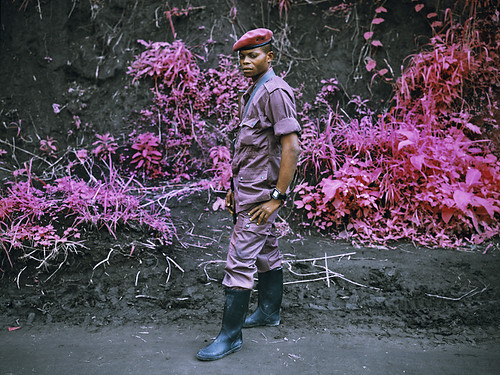
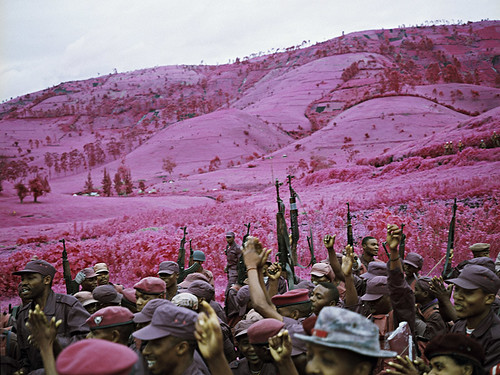
British Journal of Photography
March 25 2010
Richard Mosse: La Vie En Rose
by Olivier Laurent
Ask Richard Mosse what first fascinated him about the Congo and he'll give you a long list. "Joseph Conrad. Tin Tin. The Rumble in the Jungle. The Belgian colonial legacy. The beer. The Ebola virus. A country the size of Western Europe with less paved roads than Ireland. The ‘bulletproof' Mai Mai warriors. A conflict so pathologised that it is well past the point of human comprehension."
But it's the latter reason that led the Irish-born photographer to use Kodak's Aerochrome film. Discontinued last year, the film is particularly sensitive to infra-red light, rather than to the usual visible spectrum of colours registered by traditional film. Since foliage reflects infra-red while buildings don't, the US Army used it during the Vietnam War to detect and reveal hidden soldiers. "I wanted to export this technology to a harder situation, to up-end the generic conventions of calcified mass-media narratives and challenge the way we're allowed to represent this forgotten conflict," says Mosse. "I wanted to confront this military reconnaissance technology, to use it reflexively in order to question the ways in which war photography is constructed."
Mosse was first inspired to use the film after seeing the work of Florian Maier-Aichen. "This German artist rejects the influence of the Kunstakademie Düsseldorf and the Becher school to embrace a kind of Romantic exploration of the landscape of the American West," says Mosse. "I was moved by the beauty of this work, and wondered whether he used colour infra-red film to compose certain images. I'm not sure whether he actually did, but I got excited by the technology, which is considered to be a kind of photographic taboo – thou shalt not cross-process; thou shalt not use colour infra-red film."
While Mosse refuses to reveal where he got the discontinued film - "I could tell you but then I'd have to kill you," he jokes – up until February, a small company in Germany supplied it in the 120 medium format by cutting it down from a large roll stock. However, even that supplier has now run out of the film, BJP understands. But this setback hasn't deterred Mosse from his continued interest in Congo and infra-red technology. The 30-year-old photographer plans to go back next year with cinematographer Trevor Tweeten, with whom he's worked on previous projects.
"We plan to shoot IR Red One video. That involves sending the Red One camera back to the factory where the OLPF filter will be removed from the digital sensor." The result "will be quite extraordinary and very different to the old Aerochrome stock," he says. "It will be a kind of blown-out monochrome palette. We've actually shot infra-red before in Iraq, where Trevor repurposed his Zeiss lens to peer through a US Army IR goggle eyepiece. The result was this nightmarish green-and-black palette, rather like the old DOS interface for anyone old enough to remember computer screens before Windows and the Mac Classic."
However, he says, "the IR we will shoot in Congo will probably look a lot different, rather like the moment an atom bomb detonates. The world will seem shadowless, like a breathless high-noon desert landscape, yet we'll be beating through the jungle shadows."
www.richardmosse.com
kris kuksi
“A post-industrial Rococo master, Kris Kuksi obsessively arranges characters and architecture in asymmetric compositions with an exquisite sense of drama. Instead of stones and shells he uses screaming plastic soldiers, miniature engine blocks, towering spires and assorted debris to form his landscapes.The political, spiritual and material conflict within these shrines is enacted under the calm gaze of remote deities and august statuary. Kuksi manages to evoke, at once, a sanctum and a mausoleum for our suffocated spirit.”
Guillermo del Toro
for the past couple of years, i've been fascinated by kuksi's sculptures - thanks to D who first introduced me to this amazing body of spiritual intensity.
1) obsessively delicate sculpting, 2) militant, dogmatic messages to the contrary, 3) multiple microcosmic narratives within each piece, 4) solitary craftsmanship, 5) tension between smallness of human and aspiration to surpass it - a.k.a. religious.
12.10.2010
berlinde de bruyckere
Berlinde de Bruyckere at Hauser&Wirth, Zurich
Published in Sculpture Magazine
Is religious art compatible with today’s post-modern and cynical attitudes? Very rarely does one see contemporary artwork infused with the sublime: that characteristic that makes you feel as if there really is something beyond the physical self, something more permanent. Berlinde de Bruyckere’s sculptures are indeed imbued with that quality – they combine awe and anxiety to bring you closer to something akin to spiritual upliftment.
The Belgian sculptor who has become an international sensation in recent years, works in Ghent, Belgium in a former Catholic boys school transformed into a studio, which she shares with her husband, also a sculptor. They also live in the building along with their two children.
In this large space, Berlinde surrounds herself with reproductions of works by old masters including Lucas Cranach, Matthias Grünewald, and Luca Giordano, to study the positions of the painters’ subjects in motion and pain. The influence from these religious artists is very visible in Berlinde’s work – it is clear that there is a search for the Christian ecstasy often found in the paintings of old masters that the artist so admires.
Berlinde’s search for truth, however, is not answered with a revelation about God, but rather it is a Kierkegaardian process, filled with pain, anguish, and doubt – a representation of the human condition. Her figures are fragments of bodies, some contorted, some graceful, all immensely beautiful. They allude to the horrors that have occurred in recent times, but reveal the universal reality of suffering through the ages.
In her most recent exhibition at Hauser and Wirth, Zurich, Berlinde exhibits some new works in her characteristic style, and some much more abstract, but throughout she continues her examination of death, pain, and solitude.
In Lange Eenzame Man, or Lonely Man, a body is lying sideways on a pillow, encased in a vitrine, headless, armless, with his feet together in a contorted twist. The figure was made after the wax cast of a male model, so it is hollow on the inside, allowing us to peek through the empty space where the head and neck would have been, inside the body’s cavity. The texture of the wax of which the sculpture is made seems skin-like, but there is much red pigment in the coloring, evoking blood, of course. How can such a corpse still contain red blood, the color of life? Berlinde’s goal is not to detach the viewer from death, but bring its horrible reality into our consciousness. Like the vitrine encased molds of Mt. Vesuvius’s victims that still remind visitors of the painful death Pompeiians experienced during the volcanic eruption more than 1900 years ago, so the Lonely Man becomes a permanent testament to human suffering. Yet his pose, the fragility of the body itself, and the pillow underneath are also direct references to depictions of Christ by Old Masters. The specificity and universality of the piece are in keeping with religious art over the last few hundred years.
This influence is no surprise considering Berlinde’s upbringing in a Catholic family, with a Catholic school education, and her studio’s location, but her preoccupation with the existential concerns of humanity make her very much a part of our modern world.
In another piece, Inside Me, Berlinde uses a new material, iron, to tackle the beautiful and the terrifying. The sculpture of a horse’s carcass is cast in iron and is covered with horse skin, a method which both objectifies the horrors of violent death by focusing on the graceful form of the animal, and triggers visions of war and destruction that are only too timely. The horse as symbol of the tragedy of war has been used throughout the Western canon for many generations, but Inside Me especially brings to mind the chapter in Remarque’s All Quiet on the Western Front describing in great detail the cries of the wounded horses on the front, and the soldiers’ hesitation at putting the horses out of their misery.
In her newest series, which is a leap from her previous, more literal work, antlers hang in twos in various conformations on the wall. These pieces, all called Romeu (my deer) are also cast in iron, then covered with Berlinde’s signature wax layers and red pigment, more metaphorically and subtly allude to death. But the death in these pieces is mythological – the antlers conjure up the story of Actaeon the hunter and Artemis the goddess of the hunt, who was caught bathing in the woods by Actaeon, and out of anger turned him into a deer that was ultimately killed by his own dogs. These pieces are intriguing for their subtlety and elegance. One of the pieces in the series is even wrapped in a soft gauze as a sort of bandage, evoking the fragility of life in a delicate and rather abstract fashion.
Berlinde de Bruyckere’s work is arresting and disturbing, but it also combines the dark with the light to bring forth the duality of our condition. It is comforting to know that the great existential themes of the modernist period are still being explored, but with a contemporary touch, thus connecting our indifferent times with the impassioned ones of the first part of the 20th century. It is also this bridge between the now and the then that makes Berlinde’s work so saturated with spiritual wonder, the same feeling elicited by the Old Masters’ depictions of man’s fate as rendered in their paintings of Jesus.
kim choo-ja
“다 얘기했잖아요. 인간 김추자는 된장, 고추장 담그는 데 명수고 젓갈도 잘 알고 김치도 잘 담그며 이 세상에 지배할 사람이 아무도 없는 존재. 다만 자연만이 김추자를 지배할 수 있습니다. 제가 자연을 노래한 것 들어보세요. 거기에 김추자가 있어요.”
7.23.2010
another pessoa
"like all men endowed with great mental mobility, i have an irrevocable, organic love of settledness. i abhor new ways of life and unfamiliar places."
- 121, fp.
- 121, fp.
aesthetics of artificiality
"i live aesthetically as someone else. i've sculpted my life like a statue made of matter that's foreign to my being. having employed myself-awareness in such a purely artistic way, and having become so completely external to myself, i sometimes no longer recognize myself. who am i behind this unreality? i don't know. i must be someone. and if i avoid living, acting and feeling, then believe me, it's so as not to tamper with the contours of my invented personality. i want to be exactly like what i wanted to be and am not. if i were to give in to life, i'd be destroyed. i want to be a work of art, at least in my soul, since i can't be one in my body. that's why i've sculpted myself in quiet isolation and have placed myself in a hothouse, cut off from fresh air and direct light - where the absurd flower of my artificiality can blossom in secluded beauty."
- 114, fp.
- 114, fp.
12.08.2009
11.27.2009
11.26.2009
The book of disquiet

Fernando Pessoa
"I was born in a time when the majority of young people had lost faith in God, for the same reason their elders had had it - without knowing why. And since the human spirit naturally tends to make judgments based on feeling instead of reason, most of these young people chose Humanity to replace God. I, however, am the sort of person who is always on the fringe of what he belongs to, seeing not only the multitude he's a part of but also the wide-open spaces around it. That's why I didn't give up God as completely as they did, and I never accepted Humanity. I reasoned that God, while improbable, might exist, in which case he should be worshiped; whereas Humanity, being a mere biological idea and signifying nothing more than the animal species we belong to, was no more deserving of worship than any other animal species. The cult of Humanity, with its rites of Freedom and Equality, always struck me as a revival of those ancient cults in which gods were like animals or had animal heads.
And so, not knowing how to believe in God and unable to believe in an aggregate of animals, I, along with other people on the fringe, kept a distance from things, a distance commonly called Decadence. Decadence is the total loss of unconsciousness, which is the very basis of life. Could it think, the heart would stop beating.
For those few like me who live without knowing how to have life, what's left but renunciation as our way and contemplation as our destiny? Not knowing nor able to know what religious life is, since faith isn't acquired through reason, and unable to have faith in or even react to the abstract notion of man, we're left with the aesthetic contemplation of life as our reason for having a soul. Impassive to the solemnity of any and all worlds, indifferent to the divine, and disdainers of what is human, we uselessly surrender ourselves to pointless sensation, cultivated in a refined Epicureanism, as befits our cerebral nerves.
Retaining from science only its fundamental precept - that everything is subject to fatal laws, which we cannot freely react to since the laws themselves determine all reactions - and seeing how this precept concurs with the more ancient one of the divine fatality of things, we abdicate from every effort like the weak-bodied from athletic endeavors, and we hunch over the book of sensations like scrupulous scholars of feeling.
Taking nothing seriously and recognizing our sensations as the only reality we have for certain, we take refuge there, exploring them like large unknown countries. And if we apply ourselves diligently not only to aesthetic contemplation but also to the expression of its methods and results, it's because the poetry or prose we write - devoid of any desire to move anyone else's will or to mold anyone's understanding - is merely like when a reader reads out loud to fully objectify the subjective pleasure of reading.
We're well aware that every creative work is imperfect and that our most dubious aesthetic contemplation will be the one whose object is what we write. But everything is imperfect. There's no sunset so lovely it couldn't be yet lovelier, no gentle breeze bringing us sleep that couldn't bring a yet sounder sleep. And so, contemplations of statues and mountains alike, enjoying both books and the passing days, and dreaming all things so as to transform them into our own substance, we will also write down descriptions and analyses, which when they're finished, will become extraneous things that we can enjoy as if they happened along one day.
This isn't the viewpoint of pessimists like Vigny, for whom life was a prison in which he wove straw to keep busy and forget. To be a pessimist is to see everything tragically, an attitude that's both excessive and uncomfortable. While it's true that we ascribe no value to the work we produce and that we produce it to keep busy, we're not like the prisoner who busily weaves straw to forget about his fate; we're like the girl who embroiders pillows for no other reason than to keep busy.
I see life as a roadside inn where I have to stay until the coach from the abyss pulls up. I don't know where it will take me, because I don't know anything. I could see this inn as a prison, for I'm compelled to wait in it; I could see it as a social centre, for it's here that I meet others. But I'm neither impatient nor common. I leave who will to stay shut up in their rooms, sprawled out on beds where they sleeplessly wait, and I leave who will to chat in the parlours, from where their songs and voices conveniently drift out here to me. I'm sitting at the door, feasting my eyes and ears on the colours and sounds of the landscape, and I softly sing - for myself alone - wispy songs I compose while waiting.
Night will fall on us all and the coach will pull up. I enjoy the breeze I'm given and the soul I was given to enjoy it with, and I no longer question or seek. If what I write in the book of travellers can, when read by others at some future date, also entertain them on their journey, then fine. If they don't read it, or are not entertained, that's fine too."
11.25.2009
Robert McCall

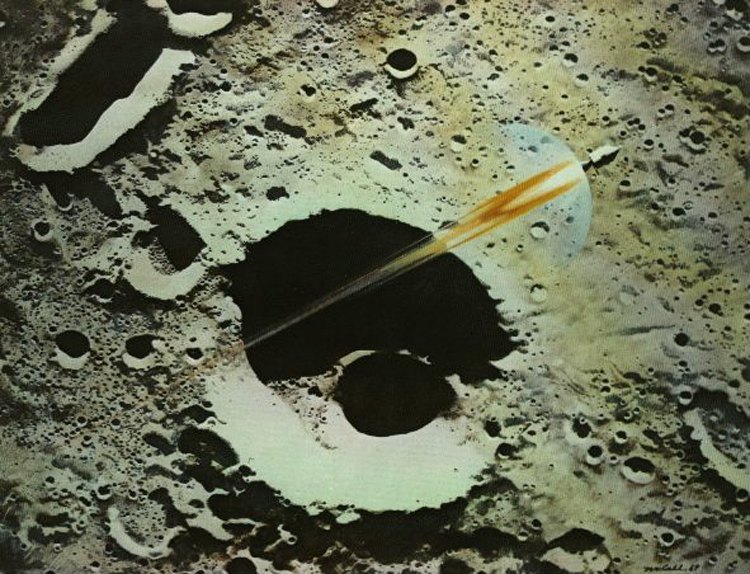
"McCall is almost the opposite of Bonestell: he has never painted scenes of other worlds or planets. His interest is only the technology: 'In my paintings," he told in an interview in 1971 "the man is of secondary importance compared to what he has done and built. And 'only appearance on stage. The main role is interpreted by his great achievements.'"
Source: www.fabiofeminofantascience.org
Chesley Bonestell
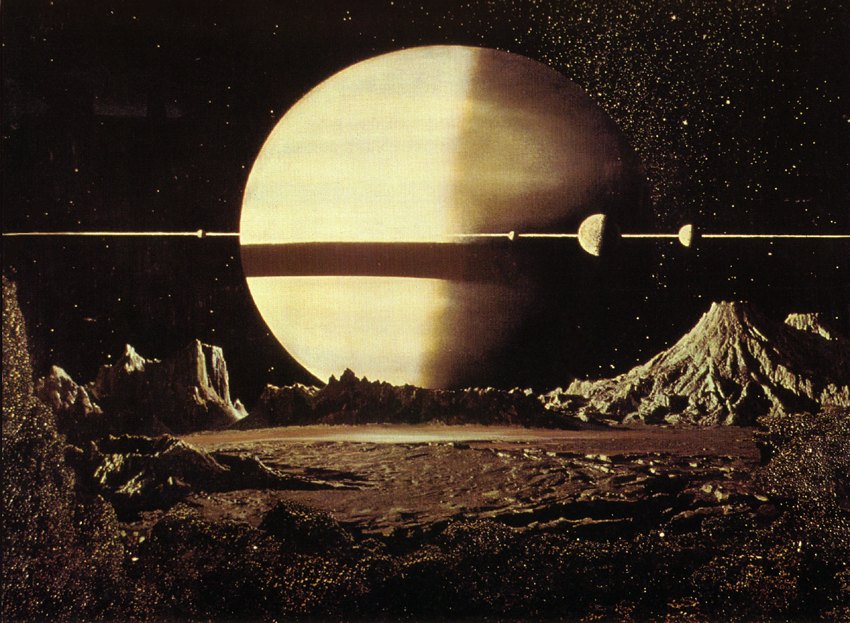
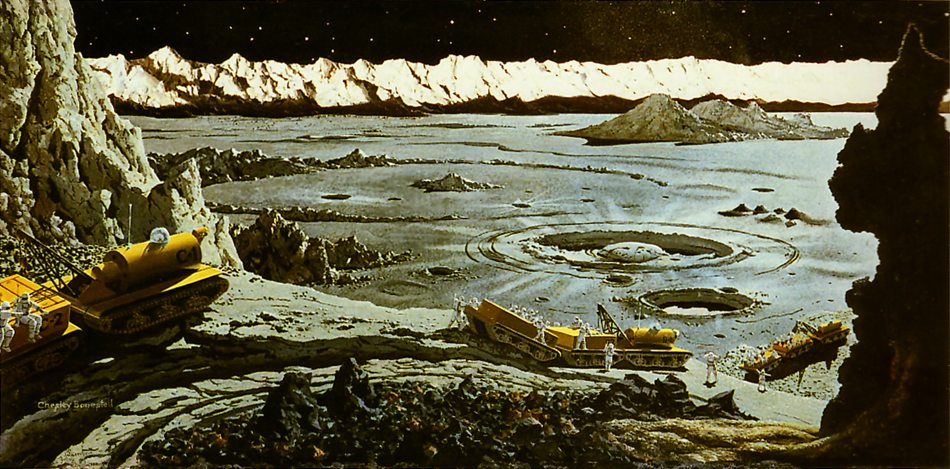
"Bonestell, now considered the greatest astronomical and astronautical illustrator of all time, was born in 1888 in San Francisco. 'Actually, I do not go the artists and I do not like them. I believe that most of the crackers are only pretending to be the painters because they believe that to become enough of stirring color. I believe that in order to retain a good painter must first be able to draw very well, while very few of the so-called contemporary artists are capable. If I want, I can do beautiful designs at any time.'"
Source: www.fabiofeminofantascience.org
Discopter (1945)



"About the same time that he lived in Berkley Alex invented an unusual flying craft. That invention was what he called the "discopter", a vertical liftoff aircraft that looked very much like what was to be later termed "flying saucer". He made numerous detailed drawings of the aircraft and other drawings of an American city with many "discopter" ports that looked very futuristic. He sent these detailed plans to all the branches of the U.S.. Military and was eventually told that they were intrigued by the concept and the design of the craft but were not prepared at that time because the war effort superseded its development. However he did indeed patent the design for the "discopter" in 1943 with the U.S. Patent Office and it served as the prototype for other similar aircraft that have been developed up to the present day."
Alexander G. Weygers (1901 - 1989)
Source: www.laesieworks.com
Operette Morali
"There is no disgust with life, no despair, no sense of the nothingness of things, of the worthlessness of remedies, of the loneliness of man; no hatred of the world and of oneself; that can last so long: although these attitudes of mind are completely reasonable, and their opposites unreasonable. But despite all this, after a little while; with a gentle change in the temper of the body; little by little; and often in a flash, for minuscule reasons scarcely possible to notice; the taste of life revives, and this or that fresh hope springs up, and human things take on their former visage, and show they are not unworthy of some care; not so much to the intellect, as indeed, so to speak, to the sense of the spirit. And that is enough to make a person, aware and convinced as he may be of the truth, as well as in spite of reason, both persevere in life, and go along with it as others do: for those very senses (one might say), and not the intellect, are what rules over us...And life is a thing of such small consequence, that man, as regards himself, ought not to be very anxious either to keep it or to discard it. Therefore, without pondering the matter too deeply; with each trivial reason that presents itself, for grasping the former alternative rather than the latter, he ought not to refuse to do so."
"For the excellence of souls brings greater urgency to their lives; which in turn brings a greater feeling of their own unhappiness; which is as much as to say greater unhappiness. In the same way, the larger degree of life in these souls implies more active self-love, wherever this may lead or whatever form it may take: and this surplus of self-love induces a more intense longing for beautitude, and therefore more vexation and suffering at being deprived of it, and deeper sorrow at the adversities that come along. All this is contained in the primeval and perpetual order of created things, which I cannnot alter."
"Ancients lived more fully than we do, partly because, on account of the grave continuous dangers they were accustomed to undergoing, they commonly died earlier than we do? And you will bestow the greatest blessing on men: whose life was always, I will not say happy, but less unhappy insofar as it was the more powerfully excited, and the more fully occupied."
-G. Leopardi
"For the excellence of souls brings greater urgency to their lives; which in turn brings a greater feeling of their own unhappiness; which is as much as to say greater unhappiness. In the same way, the larger degree of life in these souls implies more active self-love, wherever this may lead or whatever form it may take: and this surplus of self-love induces a more intense longing for beautitude, and therefore more vexation and suffering at being deprived of it, and deeper sorrow at the adversities that come along. All this is contained in the primeval and perpetual order of created things, which I cannnot alter."
"Ancients lived more fully than we do, partly because, on account of the grave continuous dangers they were accustomed to undergoing, they commonly died earlier than we do? And you will bestow the greatest blessing on men: whose life was always, I will not say happy, but less unhappy insofar as it was the more powerfully excited, and the more fully occupied."
-G. Leopardi
11.23.2009
11.12.2009
Svedhous (South Korea)
must say i'm pretty impressed to see a DSBM band from South Korea.
Despair Poetry, 2007
11.10.2009
Abigail Reynolds

"I collect second hand tourist guides. Within the century of printed photographs that they contain, I search for plates that have been printed at similar scale, taken from a similar view point.
When I find a near match between book plates, I cut and fold the pages into a new single surface. The dates written on each work give the publication dates of the books I have used. Whichever has been used as the 'base' image is listed first.
The patterns I use to cut the two book pages into one single surface are such that all of both sheets of paper are preserved. If you were to fold all the flaps in or out, the entirety of each image will be seen. The act of folding one image into the other pushes them out into three dimensions in a bulging time ruffle.
The Universal Now works operate as a resurrection of the unregarded book plates and forgotten photographers that have stood in the same places at a different times, bringing these moments into a dialogue and into the present. The Universal Now takes its title from debates about time continuum in quantum physics."
Source: http://www.abigailreynolds.com
Sofie Loscher
"I bought some iron filings so i can start to visualise the magnetic field that exists around a magnet or between two polar opposite magnets (as shown above). I have been looking for a way to intensify the presence of energy in my work, a way of creating a work with a live force at its core. I am interested in exposing the empty space between two magnets, where all the tension is and where there is nothing to be seen; making the invisible visible."
Source: http://sofieloscher.wordpress.com
Source: http://sofieloscher.wordpress.com
Richard Box


"This installation is pretty simple. It just takes advantage of an amazing electromagnetic situation created by high voltage power lines. 1301 fluorescent tubes were placed in a grid under power lines in the UK. They don’t need to be plugged in to light up because the electricity escaping from the powerlines is strong enough to excite the mercury vapor inside, causing them to fluoresce."
Source: http://jasonkrugman.wordpress.com
11.09.2009
11.08.2009
Rafael Lozano-Hemmer


"In >Pulse Room<, exhibition visitors' heartbeats are transmitted to 100 lightbulbs suspended from the ceiling. The interface, a simple metal handle, transmits a visitor*s pulse to a lightbulb after ten seconds. If another visitor touches the handle, his pulse is transmitted to the first lightbulb and the rhythm of its predecessor is transmitted to the next lightbulb in the series - thus the digital traces left by 100 visitors are permanently present in the exhibition in this poetic installation."
Source: http://interactive.usc.edu/members/sfisher
11.07.2009
Cabinets of big C

Aston Lever's Museum
"View of Sir Ashton Lever's (1729-1788) incredible museum. Lever began his collection with exotic seashells in 1760 and continued to collect items until he had amassed an astounding 28,000 items, mostly curiosities of the natural world but also many ethnographic items, most notably a large amount of stuff from Captain Cook’s voyages into the South Seas. The Leverian Museum was one of the largest private and most exceptional collections ever amassed by a single Englishman. The individual boxes of birds are quite spectacular but - as Swainson noted - such a display method took up an enormous amount of room and gave the whole museum an air of spectacle. Looking at Lever's collection, it's easy to see why taxonomy - the science of putting all creatures into their genus and species - became increastingly important for naturalists from the early eighteenth century onwwards."
Source: http://www.ravishingbeasts.com
11.03.2009
Subscribe to:
Posts (Atom)










